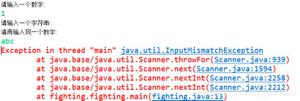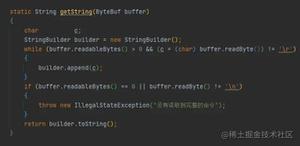Javascript OOP之面向对象
面向对象程序设计(Object-oriented programming,OOP)是一种程序设计范型,同时也是一种程序开发的方法。对象指的是类的实例。它将对象作为程序的基本单元,将程序和数据封装其中,以提高软件的重用性、灵活性和扩展性。——维基百科
一般面向对象包含:继承,封装,多态,抽象
对象形式的继承
浅拷贝
var Person = {
name: 'allin',
age: 18,
address: {
home: 'home',
office: 'office',
}
sclools: ['x','z'],
};
var programer = {
language: 'js',
};
function extend(p, c){
var c = c || {};
for( var prop in p){
c[prop] = p[prop];
}
}
extend(Person, programer);
programer.name; // allin
programer.address.home; // home
programer.address.home = 'house'; //house
Person.address.home; // house
从上面的结果看出,浅拷贝的缺陷在于修改了子对象中引用类型的值,会影响到父对象中的值,因为在浅拷贝中对引用类型的拷贝只是拷贝了地址,指向了内存中同一个副本。
深拷贝
function extendDeeply(p, c){
var c = c || {};
for (var prop in p){
if(typeof p[prop] === "object"){
c[prop] = (p[prop].constructor === Array)?[]:{};
extendDeeply(p[prop], c[prop]);
}else{
c[prop] = p[prop];
}
}
}
利用递归进行深拷贝,这样子对象的修改就不会影响到父对象。
extendDeeply(Person, programer);
programer.address.home = 'allin';
Person.address.home; // home
利用call和apply继承
function Parent(){
this.name = "abc";
this.address = {home: "home"};
}
function Child(){
Parent.call(this);
this.language = "js";
}
ES5中的Object.create()
var p = { name : 'allin'};
var obj = Object.create(o);
obj.name; // allin
Object.create()作为new操作符的替代方案是ES5之后才出来的。我们也可以自己模拟该方法:
//模拟Object.create()方法
function myCreate(o){
function F(){};
F.prototype = o;
o = new F();
return o;
}
var p = { name : 'allin'};
var obj = myCreate(o);
obj.name; // allin
目前,各大浏览器的最新版本(包括IE9)都部署了这个方法。如果遇到老式浏览器,可以用下面的代码自行部署。
if (!Object.create) {
Object.create = function (o) {
function F() {}
F.prototype = o;
return new F();
};
}
类的继承
Object.create()
function Person(name, age){}
Person.prototype.headCount = 1;
Person.prototype.eat = function(){
console.log('eating...');
}
function Programmer(name, age, title){}
Programmer.prototype = Object.create(Person.prototype); //建立继承关系
Programmer.prototype.constructor = Programmer; // 修改constructor的指向
调用父类方法
function Person(name, age){
this.name = name;
this.age = age;
}
Person.prototype.headCount = 1;
Person.prototype.eat = function(){
console.log('eating...');
}
function Programmer(name, age, title){
Person.apply(this, arguments); // 调用父类的构造器
}
Programmer.prototype = Object.create(Person.prototype);
Programmer.prototype.constructor = Programmer;
Programmer.prototype.language = "js";
Programmer.prototype.work = function(){
console.log('i am working code in '+ this.language);
Person.prototype.eat.apply(this, arguments); // 调用父类上的方法
}
封装
命名空间
js是没有命名空间的,因此可以用对象模拟。
var app = {}; // 命名空间app
//模块1
app.module1 = {
name: 'allin',
f: function(){
console.log('hi robot');
}
};
app.module1.name; // "allin"
app.module1.f(); // hi robot
静态成员
function Person(name){
var age = 100;
this.name = name;
}
//静态成员
Person.walk = function(){
console.log('static');
};
Person.walk(); // static
私有与公有
function Person(id){
// 私有属性与方法
var name = 'allin';
var work = function(){
console.log(this.id);
};
//公有属性与方法
this.id = id;
this.say = function(){
console.log('say hello');
work.call(this);
};
};
var p1 = new Person(123);
p1.name; // undefined
p1.id; // 123
p1.say(); // say hello 123
模块化
var moduleA;
moduleA = function() {
var prop = 1;
function func() {}
return {
func: func,
prop: prop
};
}(); // 立即执行匿名函数
prop,func 不会被泄露到全局作用域。或者另一种写法,使用 new
moduleA = new function() {
var prop = 1;
function func() {}
this.func = func;
this.prop = prop;
}
多态
模拟方法重载
arguments属性可以取得函数调用的实参个数,可以利用这一点模拟方法的重载。
function demo(a, b ){
console.log(demo.length); // 得到形参个数
console.log(arguments.length); //得到实参个数
console.log(arguments[0]); // 第一个实参 4
console.log(arguments[1]); // 第二个实参 5
}
demo(4, 5, 6);
//实现可变长度实参的相加
function add(){
var total = 0;
for( var i = arguments.length - 1; i >= 0; i--){
total += arguments[i];
}
return total;
}
console.log(add(1)); // 1
console.log(add(1, 2, 3)); // 7
// 参数不同的情况
function fontSize(){
var ele = document.getElementById('js');
if(arguments.length == 0){
return ele.style.fontSize;
}else{
ele.style.fontSize = arguments[0];
}
}
fontSize(18);
console.log(fontSize());
// 类型不同的情况
function setting(){
var ele = document.getElementById('js');
if(typeof arguments[0] === "object"){
for(var p in arguments[0]){
ele.style[p] = arguments[0][p];
}
}else{
ele.style.fontSize = arguments[0];
ele.style.backgroundColor = arguments[1];
}
}
setting(18, 'red');
setting({fontSize:20, backgroundColor: 'green'});
方法重写
function F(){}
var f = new F();
F.prototype.run = function(){
console.log('F');
}
f.run(); // F
f.run = function(){
console.log('fff');
}
f.run(); // fff
抽象类
在构造器中 throw new Error(''); 抛异常。这样防止这个类被直接调用。
function DetectorBase() {
throw new Error('Abstract class can not be invoked directly!');
}
DetectorBase.prototype.detect = function() {
console.log('Detection starting...');
};
DetectorBase.prototype.stop = function() {
console.log('Detection stopped.');
};
DetectorBase.prototype.init = function() {
throw new Error('Error');
};
// var d = new DetectorBase();// Uncaught Error: Abstract class can not be invoked directly!
function LinkDetector() {}
LinkDetector.prototype = Object.create(DetectorBase.prototype);
LinkDetector.prototype.constructor = LinkDetector;
var l = new LinkDetector();
console.log(l); //LinkDetector {}__proto__: LinkDetector
l.detect(); //Detection starting...
l.init(); //Uncaught Error: Error
以上是 Javascript OOP之面向对象 的全部内容, 来源链接: utcz.com/z/314602.html









